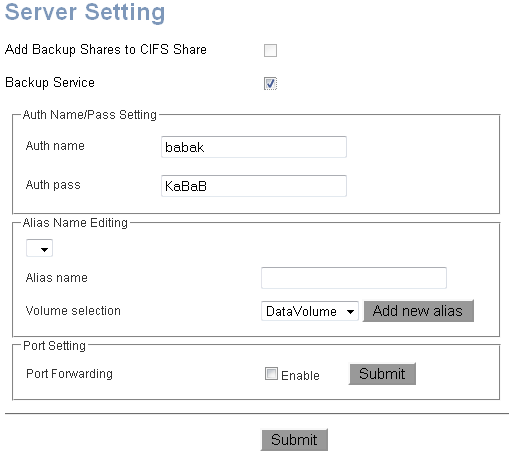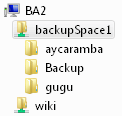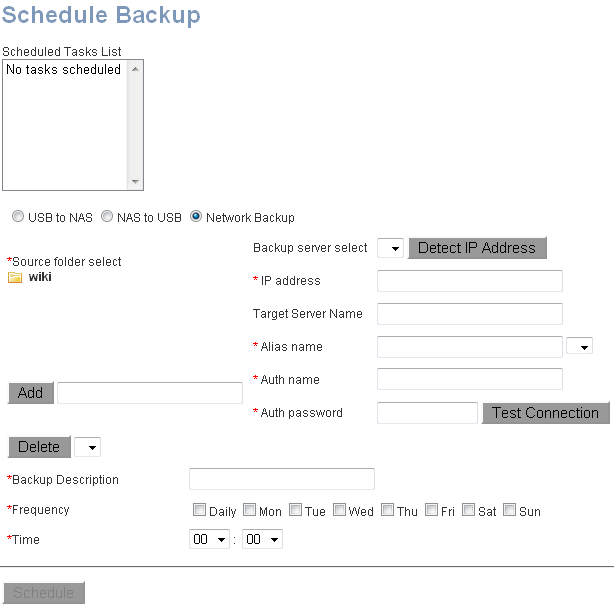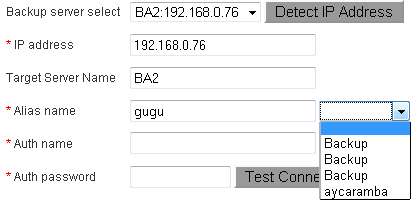I’ll provide instructions for NAS to NAS backups using two Seagate BlackArmor NAS 220 (from a “source NAS” to an identical “target NAS”) below, but first I have to warn you that these devices have two serious drawbacks which might render them completely useless for this purpose.
Things you should know before buying Seagate’s BlackArmor NAS 220
a) It is dreadfully slow. Seagate itself wrote that the “NAS should be running around 9-10 MB/s” in their response to a customer on Newegg. This is much slower than a USB 2.0 external HDD (around 30MByte/s). A (certainly more expensive) modern NAS meant for SOHO use like the Qnap TS-219P+ can achieve write speeds of around 60MByte/s while a business NAS like the Qnap TS-239 Pro II+ will be able to reach close to 100MByte/s*.
With just 28% data volume usage on a 4TB BlackArmor NAS 220 in Raid 1 configuration, my NAS to NAS backup took somewhere between 17 and 21 hours!
b) Making matters significantly worse is the fact that Seagate’s BlackArmor NAS 220 is unable to do incremental NAS to NAS backups. This means the device will have to copy all of the files again instead of copying only those which have been modified since the last backup.
My intention was to have daily NAS to NAS backups done automatically during the night. As the data volume increases, this will become impossible with this NAS because it won’t have finished the previous day’s backup by the time the next one is scheduled to start. I would not promote a device like this as a “small-business specific network-attached storage solution”**.
This doesn’t mean it’s completely useless, though. You could still do daily NAS to NAS backups of a few important files while backing up the entire device only during long weekends or extended holidays.
Set up NAS to NAS backups on Seagate’s BlackArmor NAS 220
The user guide does a poor job of explaining the process, which is why I’ve written it down here:
1. Got to the target device (where you want your backups to be saved) and select STORAGE > Backup Manager.
2. Under Backup Server, select Server Setting.
3. Check the Backup Service box. The following form should appear:

4. Enter an Auth name and Auth pass. You’ll need these later when starting the backup from the source NAS.
5. You’ll have to set up an Alias name. Enter a name and click on Add new alias.
Wondering what this is and why you need it? The manual won’t help you here. As far as I understand it, the “alias name” will be used as the name of the backup subfolder in the backup share on the target device. For the example pictured below, I had set up 3 aliases (“aycaramba”, “Backup” and “gugu”). You can probably use aliases to back up your files to different subfolders on different days of the week, enabling you to keep several versions of a file (and many totally identical files because this NAS can’t tell the difference).

Please note that you won’t be able to access this folder structure immediately (see “Access your backup” below).
6. Click on Submit at the very bottom of the form.
7. Go to the source NAS and select STORAGE > Backup Manager.
8. Under Backup Manager, click on NAS to NAS if you want to do a (one time) backup immediately or click on Schedule Backup to schedule a backup in the future. I’ll go with the second option.
9. In the Schedule Backup form, select Network Backup. Don’t ask me why it’s called “NAS to NAS” in the menu on the left and “Network Backup” here.

10. Choose the backup server by entering the IP address of the target NAS manually or by clicking on Detect IP Adress and selecting a server from the list. Enter all required fields for the backup server. Don’t panic if the alias doesn’t show up in the drop-down-list, you can just enter it in the text field:
 11. Test the connection. If you get an error, make sure you’ve entered Auth name, Auth pass and Alias name as specified above on the target NAS. If it still doesn’t work, go back to the target NAS and make sure the Backup Service is activated (step 3).
11. Test the connection. If you get an error, make sure you’ve entered Auth name, Auth pass and Alias name as specified above on the target NAS. If it still doesn’t work, go back to the target NAS and make sure the Backup Service is activated (step 3).
12. Enter a Backup Description, select Frequency and Time and click on Schedule.
You’re done. You can select Task Monitor under Backup Manager to see if a backup is running (which will also give you widely varying estimates of the remaining time).
Access your backup
Eventually, you might want to access the backed up files on the target NAS. This shouldn’t be a problem since Seagate says this device can do “Network NAS to NAS replication”.
You’ve guessed it, of course it’s a problem and “replication” might not be the most appropriate term here. On the target NAS, you’ll have to go back to STORAGE > Backup Manager > Server Setting, uncheck the box next to Backup Server and check the one next to Add Backup Shares to CIFS Share, then click on Submit. BTW, this is not mentioned in the user guide at all.
You’ll now be able to access a network share called backupSpace1 using the admin credentials (not the Auth name and Auth pass for the backup server). This share contains the aliases which contain the backed up folders. Make sure you don’t forget to reactivate the Backup Server option after you’re done or else the next scheduled backup will fail.
Now please excuse me while I try to revive my antique PowerPC-based Buffalo TeraStation, which I believe is faster than my shiny new Seagate BlackArmor NAS 220.
Firmware: version 2000.1211
User guide: version 2
* As tested by c’t magazine 8/11, page 110.
** The complete sentence – which I should have read more carefully – is: “The BlackArmor NAS 220 server is a small business-specific network-attached storage solution designed to provide centralised storage and data backup, helping to deliver business continuity for up to 20 PC.” You might like it a lot more than I did if you’re only interested in doing incremental backups from a PC to the NAS (you’ll probably still notice that it’s very slow).
I appreciated finding this, along with the slight, biting humour. Thanks!
How can I delete the backup files or any file from the backupspace1 folder, I keep getting “You require permission from Unix User\root to make changes to this file”. My NAS-NAS backups fail as there is no space left on the target NAS but all is hidden under backups